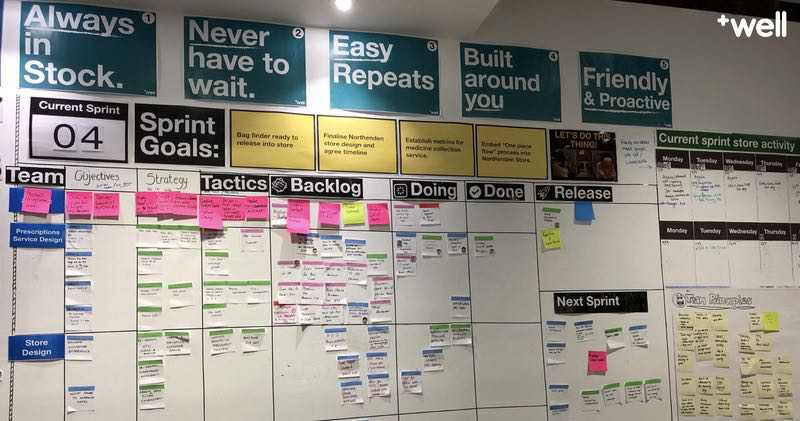
I have been working within agile delivery teams for quite a few years now and have often been nominated, asked or took it upon myself to help my teams establish their ‘physical wall-space’.
The following are some thoughts about why Agile Walls can be really valuable and hopefully some inspiration for when you create your own.
Walls are a team’s vital signs
Walking around a team’s work area is usually a good way to establish the status of a team and the work they’re doing.
Browsing a team’s wall-space should give you key information about the situation at hand in much the same way that a patient-chart and health monitor at the end the bed, can give a doctor or passer by the key information they need while a patient is sleeping.
The vital signs for an agile delivery team might be:
- What are they striving to achieve? (and how will they know if they
- have done so?)
- What are they currently doing? (What and how many things are in-progress?, what is planned?)
- Who are the team?
- Who are they doing it for? (and who is involved)
- What is blocking them from getting stuff done?
- What metrics are they using?
- What insights have they uncovered?
- Are they generally happy?
- What is important to them about how they work together?
Of course, there is no set way that teams should be using their workspace but as a general rule:
If you can’t answer those questions from a team’s physical space then I’d say that the walls are probably not working hard enough for them or their organisation.
Leisa made an excellent point in her post “What walls are for” when she said:
Sometimes the walls are not for you but for other people.
Walls are a team’s campfire
I heard this analogy for something else recently and I really like it when thinking about a team’s agile walls.
People gather around Campfires to have conversations and tell stories. They’re not formal and you don’t need to build any serious infrastructure to support them.
As Alan Cooper says, throwaway drawings, discussions and notations are what whiteboards are for.
Further reading
- What walls are for by Leisa Reichelt
- The role of the Agile Wall by Emily Webber
- The Anatomy of our Kanban board by Eleanor Mollett
- Know whiteboards, Know Design by Alan Cooper

